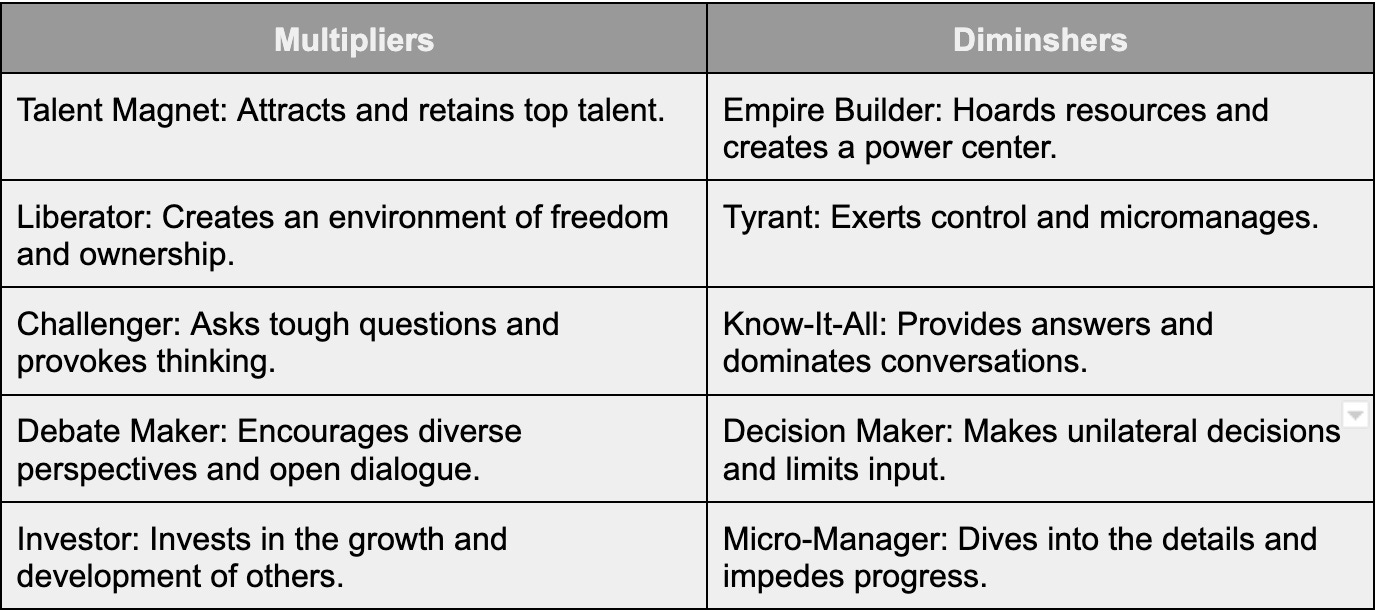Unlocking the Secret to Job Security: Replace Yourself
Discover how embracing the power of multipliers can help you navigate uncertainties and build a resilient career.
It’s a scary time out there on the job market. There have been a ton of tech layoffs and a lot of economic uncertainty. Are we in a recession? Are we about to be in one? Are some sectors in a recession? There are some legitimate fears about keeping your job. Along those lines, I had a great conversation with a current leader and newer manager that I am currently coaching. They asked: “Why do you want your people to do your work? Aren’t you scared of being replaced?”
These are fantastic questions. Why would we want someone to replace us and do our job? Aren’t we afraid that our managers will see our direct reports uplevelling and look to actually replace us with them? If they start to do the work we are currently doing, what will we do?
These questions expand beyond management as well. If the junior engineer or associate on my team starts to do the tasks I currently do, will they replace me?
My answer is that I want my team to take my job.
There is too much work on my plate, and really most leaders’ plates. In order to prioritize my time effectively, I want to build up my employees’ skills, ultimately to replace me, because I don’t want to do this job forever. I would like to focus on the most meaningful work that I can do. I can’t do that if I can’t make my teams effective to the level that they don’t need me in their day-to-day responsibilities.
To get to that answer, I asked myself the following questions and you should as well:
What work do I really want to be doing?
What role do I really want to have?
For how to get there, we come to the bedrock of my leadership philosophy, Multipliers - How the best leaders make everyone smarter by Liz Wiseman. We’ll delve into a seven part learning series, based on the concepts and how to start to use them so you can be a multiplier too!
"Multipliers" by Liz Wiseman breaks down the concept of leadership into two archetypes: "multipliers" and "diminishers." Multipliers are leaders who amplify the intelligence and capabilities of their team members, while diminishers tend to stifle creativity and potential. There is also a variation of diminishers, named “accidental diminishers” that we’ll delve into a little later on in this series. Through research and real-world examples, Wiseman demonstrates how multipliers unleash the full potential of their teams, resulting in higher performance, increased engagement, and overall organizational success.
The table below illustrates the main attributes of Multipliers and Diminishers:
Wiseman describes specific behaviors and practices of multipliers that set them apart. These leaders are characterized by their ability to create a safe environment where people feel encouraged to contribute their best ideas and stretch their capabilities. Multipliers ask challenging questions, provide autonomy, and promote a growth mindset, fostering a culture of continuous learning.
The book describes practical strategies for aspiring multipliers to develop their leadership skills, such as conducting talent audits, providing stretch assignments, and giving ownership to team members. We’ll dive deep into a few of them, so you will be able to start using them too!
Here is a multiplier exercise that I do on a regular basis to start with on your path towards being a Multiplier:
Write out in three columns or sections on a pad of paper or type out in a document:
Work Only I can do
Work I like/prefer to do (can be work only you can do)
Work someone else on my team could do
Take 5 minutes and write down all the work and tasks on your plate right now.
From the “Work someone else on my team can do” column, identify a task that would be a stretch for someone on your team or a junior team member to do. This task should be generally within the scope of their job description or work and something that takes up around 2 hours or more every week.
If you are a manager, write out the task and what it takes to get it done, then schedule some time with a direct report who could step up to do it and give them that work with you supporting them as a backstop
If you are an individual contributor, talk to your manager about the work you would like your junior teammate to do and why.
Pending approval, write out the task and what it takes to get it done.
Set up time with them and give them that work with you supporting them as a backstop.
In a two week period, log the time that you have gotten back in your schedule and what you’ve been able to do with that time.
Let me know how it goes!
What I Learned
The perspective gained is that you need to build up and train your team and junior people to replace you so that you can get the job or do the work you want to do.
Stay tuned for part 2 where we delve into the concepts of the Talent Magnet and how to build up a diversity in thought on your team and into your day to day.
Let’s keep learning!




